A few handy tips to help you take your badminton doubles game to the next level
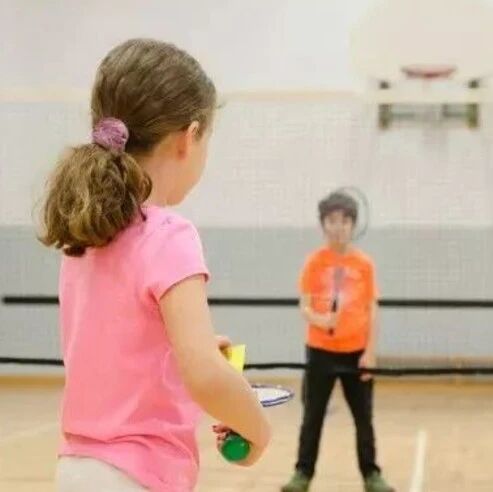

How can we make sense of this? Let’s take an example: When a teammate in the back court hits a straight-line shot, and another teammate at the net simultaneously plays a straight shot—attacking the same target at the same time—what’s the advantage? Simply put, it’s "two players against one." With two attackers positioned—one at the front, one at the back—the team achieves both offensive and defensive balance. By targeting just one opponent, the defender is forced to focus entirely on blocking, leaving them vulnerable to mistakes over time. However, if at this critical moment a teammate shifts the attack to a different angle or direction, it gives the defending player a chance to breathe, regroup, and adjust their strategy—only to be caught off guard when the original attack resumes with renewed intensity.
Everyone should already understand this: in singles, hitting cross-court shots, dropping shots, and chopping the ball are all effective ways to wear down your opponent's stamina. However, in doubles, doing the same thing creates an opening for one of your opponents to catch their breath. That’s why, in doubles, smashes are always directed straight down the line—targeting a single, specific spot. Even net play, like blocking or closing in, focuses on just one precise point—because no matter how carefully planned, there’s always room for a small mistake.

Attacking the same position in both the front and back courts
In doubles, the middle ball often causes trouble—either both players scramble to return it, disrupting each other, or they both give up, watching helplessly as the ball hits the ground. Earlier, we also discussed the middle ball, and the best way to handle it is the diagonal approach.
Specifically: Depending on the direction of the ball, if it’s coming diagonally, the teammate diagonally opposite will handle it, with the other teammate providing support. If the ball is coming straight, the teammate positioned directly in line with it will take care of it.

Ball coming from the left—handled by the player on the right.
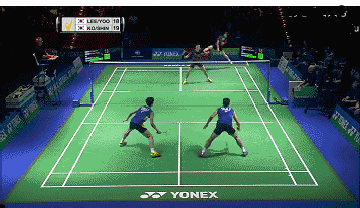
In doubles, teamwork between two players is essential, and proper positioning becomes especially critical. While we generally understand the basic principle—“attack from the front, defend from the sides”—there are still numerous positioning challenges that arise during actual play. For instance: During an attack, who should be in the front, and who in the back? When defending, who takes the left position, and who the right? And how do the two players quickly switch positions when transitioning from offense to defense?
First, let’s talk about positioning during an offensive play. When serving begins, the server positions themselves in the front, while the other teammate stays behind—creating a front-and-back formation. If transitioning from defense to offense, the player who will make the final hit moves to the front, with the other teammate retreating to the back. Meanwhile, if the opponent lifts a high ball during defense, players should follow the standard receiving principles: diagonally incoming balls are received diagonally, and straight balls are handled straight ahead. In this case, the receiver steps back, while their partner moves forward into the attacking zone.
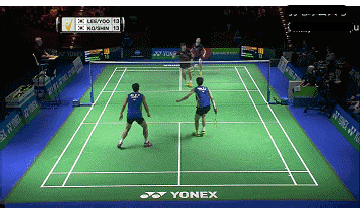
After setting the net, transition into an offensive play—while the player setting the net remains at the net to defend, another teammate moves into position in the backcourt.
When defending, the players' positions during the serve receive should immediately revert to their original defensive setup. If transitioning from offense to defense—specifically when a player lifts a high ball—the player who executed the lift steps straight back to their original position, while the other teammate smoothly shifts laterally to the opposite side.
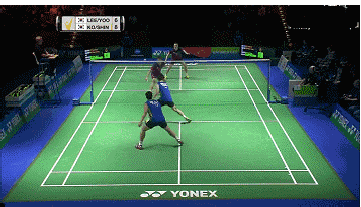
After lifting the ball, smoothly step backward while your teammate moves to the other side.
Have you noticed that in doubles play, players almost always use their backhand to receive smashes—why is that?
First, in doubles, players generally avoid hitting the forehand sideline, as this makes it easy for the opponent to drop a soft shot into the net.
Second, the smash shot has a shorter trajectory, allowing for quicker reaction time when returning the ball;
Third, the reach for a backhand drop shot is greater.
Why is it said that the backhand has a wider reach for defensive shots? Remember we talked about the "chasing ball"—well, if the shuttlecock lands in areas like your abdomen, chest, or even along the ribs on your forehand side, a backhand can handle it, but your forehand simply wouldn’t be able to reach those spots.
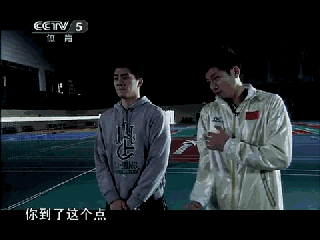
Let's take a look at the backhand kill:

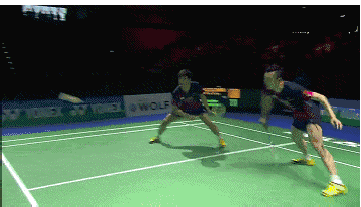
Those were a few handy tips to keep in mind during doubles play—hopefully, they’ll come in handy for you. Of course, mastering these skills will require plenty of practice and teamwork with your partner. And who knows? Before long, you might just be dominating the court like your favorite idol does!

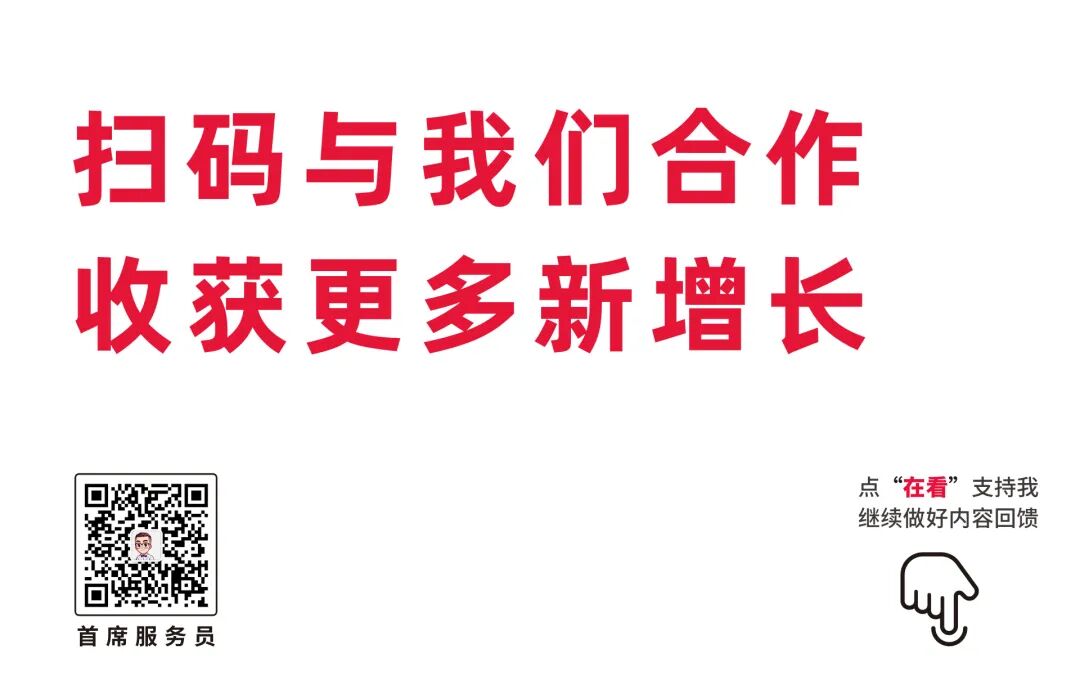
People who liked this content also liked
Related Articles
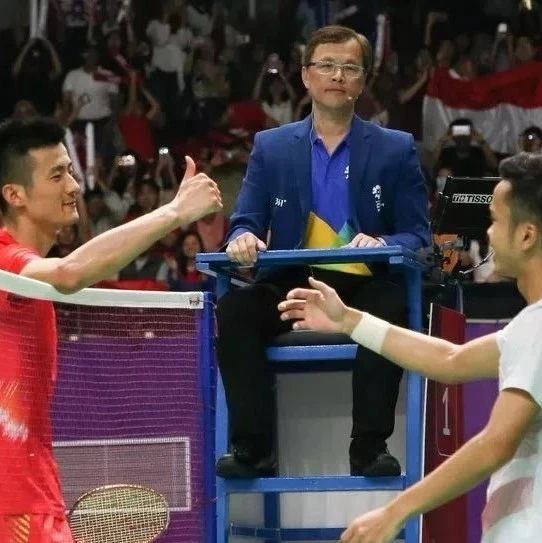
Sportsmanship reflects your character! When you step onto the court to play badminton in the real world, make sure to remember these 17 "don'ts"!
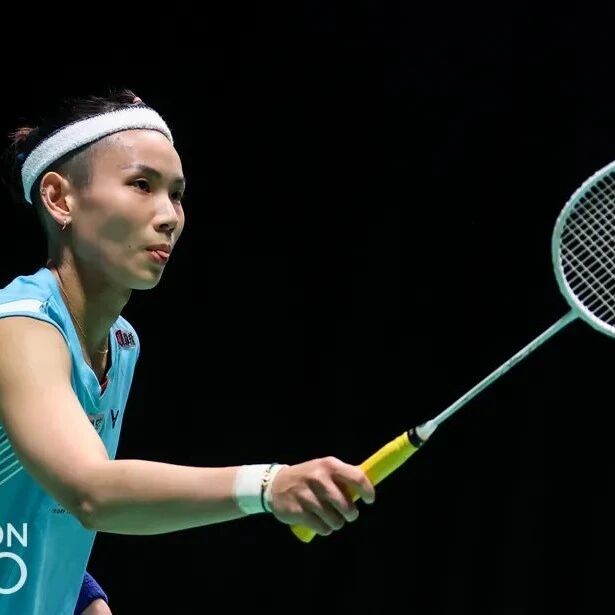
Mistaking the very first step in playing badminton? Check now to see if you're falling into racket-gripping pitfalls.
